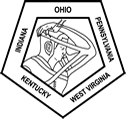<< Back to the abstract archive
Buccal Sulcus Approach to Septal Perforation Repair
Kenny Quang, MD
Ananth Murthy, MD
Summa Health Systems
2025-01-07
Presenter: Kenny Quang, MD
Affidavit:
100% of this project represents the original work of the resident.
Director Name: Ananth Murthy
Author Category: Resident Plastic Surgery
Presentation Category: Clinical
Abstract Category: Craniomaxillofacial
Introduction:
Treatment of septal perforations is a challenging endeavor. Recurrence ranges from 30-70%. Operative correction often requires wide dissection, local flaps, and septal spacers. The pediatric population poses an even greater challenge given the limited size for visualization and less tissue available to transfer. The most common and successful methods involve endoscopic and open rhinoplasty techniques.
We present a midfacial degloving approach via a transoral, gingivobuccal approach. Our approach does not require an endonasal component or external incisions.
Methods:
An upper gingivobuccal sulcus incision is carried down to maxillary periosteum. A subperiosteal dissection is performed to the level of the piriform rim and anterior nasal spine, elevating the lateral vestibular mucosa and nasal floor in continuity as wide based mucoperiosteal flaps. Dissection is carried medially raising mucoperichondrium off the caudal septum to the perforation. Incisions are made around the circumference of the perforation, then separating the mucoperichondrium. Mucoperichondrium are advanced medially, closing the perforation in a straight, tension-free closure. An interposition graft of acellular dermal matrix is inset. The gingivobuccal sulcus incision is closed, and silicone nasal splints placed.
Results:
Two patients underwent this technique for repair of anterior nasal septal perforations. Follow up was 49 months and 8 months without any recurrence.
Conclusion:
Anterior nasal septal perforation repair with wide based mucoperiosteal/mucoperichondrial flaps via an intraoral, maxillary buccal sulcus incision is a safe and effective alternative without compromising facial aesthetics by external scars from alatomy or open rhinoplasty incisions, or risking facial growth disturbances in the pediatric population.



